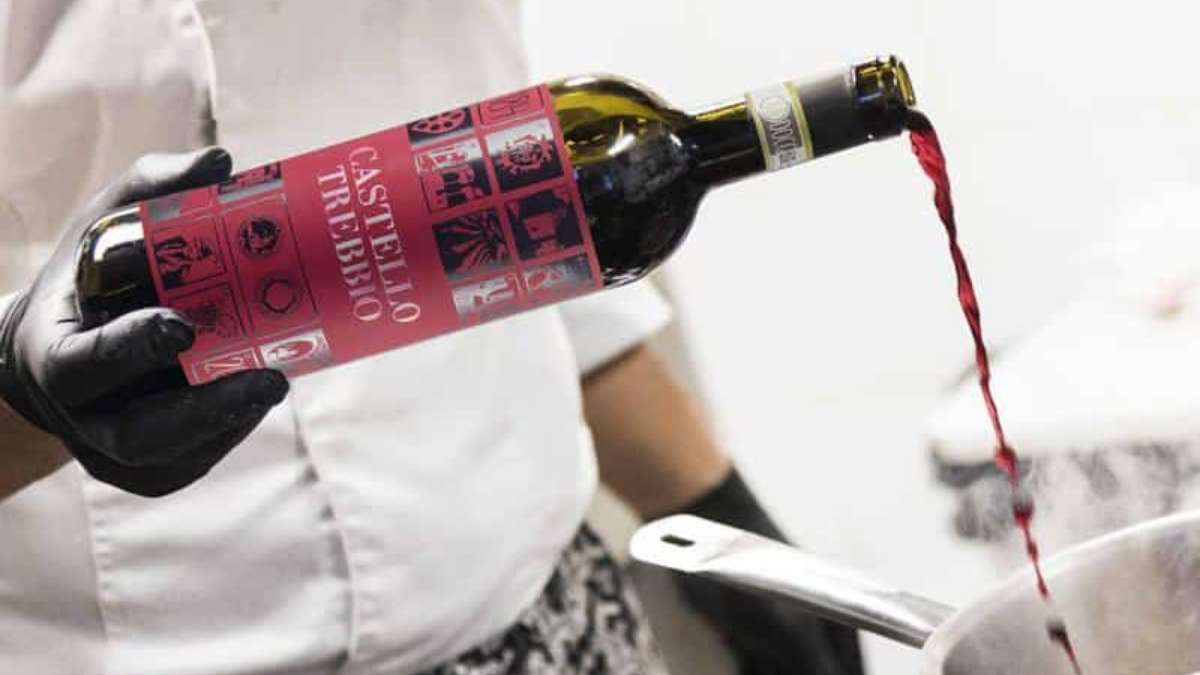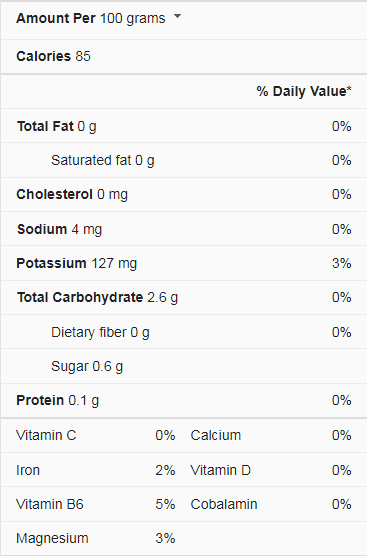If you are making a beef stew or a steak, the best dry red wine to use for this dish is Cabernet Sauvignon. This popular grape is high in tannins and has a flavor similar to plums and blackberries, and it is also high in acidity. Many people use merlot for beef stews because of their smooth texture and versatility. It pairs well with steaks and other meat dishes because of its moderate acidity and balanced flavor.
Dry Red Wine Nutrition Facts
Tips for Cooking with Wine
Here are some tips for cooking with wine:
Choose your Wine Carefully
You should pour red or white wine into the pan depending on what you’re cooking. Use a young, full-bodied red wine when searing red meat or making a red sauce for spaghetti. Choose an earthier, full-bodied red when making a meaty or root veggie-filled soup. Choose the dry white if you’re making a cream sauce or cooking with seafood, poultry, veal, or pig. When creating a vegetable-based soup, the same rule applies. To maximize the finger-licking quality of the last meal, always choose a sweet white wine or a sweet fortified wine for dessert. But whatever you do, stay away from cooking wines from Holland House! They’re usually laced with chemicals and high sodium levels, lowering the nutritional value of your food.
Don’t Cook with Wine you wouldn’t Drink
You know that bottle of wine you’ve been thinking about re-gifting? Could you not use it in the kitchen? If you don’t like it when you drink it, you won’t like it when you eat it. The flavors won’t enhance when it’s cooked, despite what you may have heard. Heating it can accentuate any flavors that aren’t quite right. When choosing your potion, be careful to select a wine you are familiar with and enjoy. This assures you won’t be tempted to toss your food out with that dreadful pinot grigio.
Use it as a Marinade
If you’re going to cook meat for dinner, try marinating it first in wine. Wine includes tannins, which aid in breaking down the hardness of the protein. Furthermore, the acidity of your wine will assist balance out the oil and fat in the meat while also adding moisture, preventing a dry, tasteless feast. Don’t use the liquid that soaked the uncooked meat if you’re going to baste the meat or make a complimentary sauce with it, and it could be home to deadly microorganisms! Instead, save some fresh wine for basting or boiling your sauce to avoid foodborne diseases.
Know When to Pour
The amount of time it should spend simmering on the burner varies depending on the color of wine you pick. If you’re making a light meal with white sauce, don’t keep it on the heat for as long as you would with red sauce. Red wines are typically cooked longer to bring forth their deep ruby color. Also, please don’t add alcohol to your dish shortly before serving it for the best results. This will give your chicken the flavor of a glass of wine. Allow the wine to cook alongside the dish instead. This will help to bring out the full range of flavors.
And in How Much Quantity
It’s just as crucial to know when to pour the wine as it is to know how much to pour. Use two tablespoons of wine per cup of broth in soups; one tablespoon per cup of sauce in sauces; two tablespoons per cup in gravies; and a quarter cup per pound in meats and stews. It’s simple enough!
The Best Dry Red Wine for Cooking Beef
Here are some best dry red wines for cooking beef:
Mark West Pinot Noir
Features:
- Medium-bodied red wine
- Black cherry, cola, strawberry, plum, and soft tannins
- Pairs well with light, tomato-based sauces, grilled salmon, and roasted pork
- Sourced from the finest vineyards throughout California’s appellation
- Daily punch-downs and pump-overs extract flavor and color
Josh Cellars Cabernet Sauvignon
Features
Élivo Cardio Zero Red Non-Alcoholic Red Wine
Catena Malbec
Features:
Cooking Beef Stew With Red Wine Do’s & Don’ts
Your crush is coming over, and you want that beef stew to cook so excellently that they’ll give you chef’s kisses the moment they take a bite? Here’s what you should and shouldn’t do:
Do
- For stews, chuck roast and brisket are ideal; steer clear of anything too lean.
- When the meat is cooked in the stew, it will not brown on its own, give it a sear, and it’ll take on a whole new level of flavor.
- You can’t beat fresh herbs in a stew. Add parsley, tarragon, or rosemary near the end of your cooking time. They elevate the flavor so much — you’d be stew-paid not to.
Don’t
- There’s a reason it’s called a stew. Allow time for the beef to become soft. A hastily prepared stew isn’t a pleasant stew.
- Adding a few tablespoons of flour (depending on how thick you prefer your stew) will give it a nice, thick texture.
- Don’t limit yourself to just onions and carrots. Mushrooms are a great addition to any stew and bring out the beef flavor.
Conclusion
When selecting a dry red wine for cooking beef, it is essential to ensure it is not too sweet. While it is essential to choose a dry red wine for cooking beef, you should also ensure it’s suitable for your desired flavor profile. As long as it is inexpensive, it can be an excellent choice for most recipes. This wine should be the first thing you purchase, and you should buy it if you like it and don’t mind a few drops of it.








